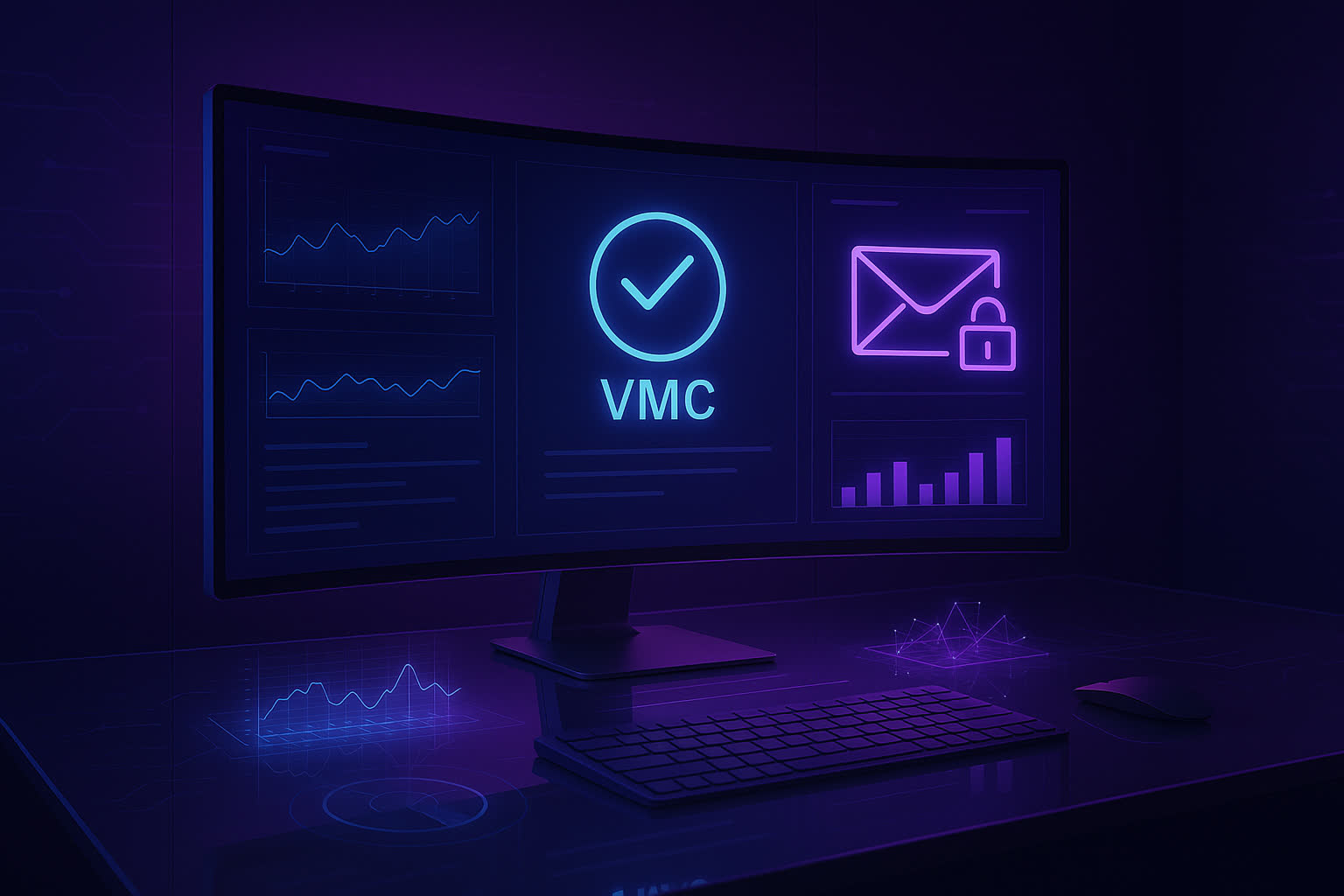In a digital landscape where phishing scams cost businesses an average of $4.91 million per breach, the humble email inbox has become the frontline in cybersecurity defense. Yet surprisingly, most enterprises still rely on outdated authentication methods that leave both their brand and customers vulnerable.
Enter Verified Mark Certificates (VMCs) – the missing piece in your email security puzzle that’s quickly becoming an essential standard rather than a nice-to-have option.
The Evolving Email Security Landscape
Recent data from the Email Security Metrics Group reveals a stark reality: organizations using VMCs experience 25% higher email deliverability rates compared to those without this protection. More compelling still, the Phishing Defense Network’s March 2025 comparative analysis showed a 40% reduction in successful phishing attacks for companies that implemented VMCs.
We’re witnessing a paradigm shift in how enterprises approach email authentication, notes the International Email Standards Association in their recently released policy framework. VMCs are becoming as fundamental as DMARC and SPF in a comprehensive security strategy.
Beyond Security: The Brand Recognition Advantage
While the security benefits are compelling, the branding advantages of VMCs create a dual-purpose investment:
– Instant Visual Trust: Your authenticated logo appears in recipients’ inboxes, creating immediate brand recognition
– Competitive Differentiation: With only about 60% of major email providers fully supporting VMC display (according to the Email Standards Project), early adopters gain a distinct advantage
– Customer Experience: Acme Corp’s case study revealed not just a 30% reduction in phishing attempts but also a 15% increase in email open rates after VMC implementation
Overcoming the Integration Hurdles
Despite the clear benefits, many organizations face implementation challenges. Our analysis identified several critical gaps:
1. Technical Integration Complexity
The integration of VMCs with existing email authentication frameworks (SPF, DKIM, DMARC) remains a significant hurdle for IT teams. Recent forum discussions highlight ongoing certificate management issues, with many administrators struggling with manual processes that don’t scale effectively.
Solution: New automation tools are emerging to address this gap. CertiTech Solutions recently launched an API specifically designed to streamline VMC lifecycle management, reducing the technical burden on IT departments.
2. ROI Uncertainty
Until recently, quantifiable return on investment for VMC implementation remained elusive, making it difficult for security leaders to justify the expense.
Solution: New performance benchmarks now demonstrate tangible benefits:
– 25% higher email deliverability rate
– 40% reduction in successful phishing attacks
– Enhanced brand visibility in customer inboxes
3. Certificate Authority Limitations
The limited number of trusted Certificate Authorities supporting VMCs has created bottlenecks in the verification process.
Solution: The ecosystem is expanding rapidly. With SecureCert Authority’s recent announcement of full VMC support, five major CAs now offer streamlined verification services, with more expected to join as adoption increases.
The Implementation Roadmap: Next Steps for Enterprise Leaders
For organizations ready to strengthen their email security posture with VMCs, we recommend a phased approach:
1. Assess Your Current Authentication Framework: Ensure your DMARC, DKIM, and SPF policies are properly configured – these form the foundation for successful VMC implementation.
2. Evaluate Certificate Authority Options: Compare the five leading VMC providers based on your specific needs (pricing, support, integration capabilities).
3. Develop an Integration Strategy: Work with your IT team to create a VMC deployment roadmap that minimizes disruption to existing workflows.
4. Measure and Optimize: Implement tracking metrics for both security improvements (phishing reduction) and marketing benefits (deliverability, open rates).
The Future of Email Authentication
The formation of the VMC Consortium signals broader industry collaboration and knowledge sharing. This development, coupled with increased standardization efforts, suggests VMCs are moving from emerging technology to established standard.
As the Global Cybersecurity Institute’s recent whitepaper suggests, integrating VMCs with existing authentication protocols could further reduce phishing by an additional 15% – creating a compelling case for organizations to act now rather than play catch-up later.
—
The email inbox represents both significant vulnerability and opportunity. By implementing VMCs today, enterprise leaders can simultaneously strengthen security posture and enhance brand presence where it matters most – in their customers’ daily digital interactions.
The question is no longer whether VMCs are worth implementing, but whether your organization can afford to be left behind as this standard becomes expected rather than exceptional.
—
Want to learn more about implementing VMCs in your organization? Download our comprehensive VMC Readiness Assessment Checklist to evaluate your current email authentication framework and identify your next steps toward enhanced security and brand recognition.
